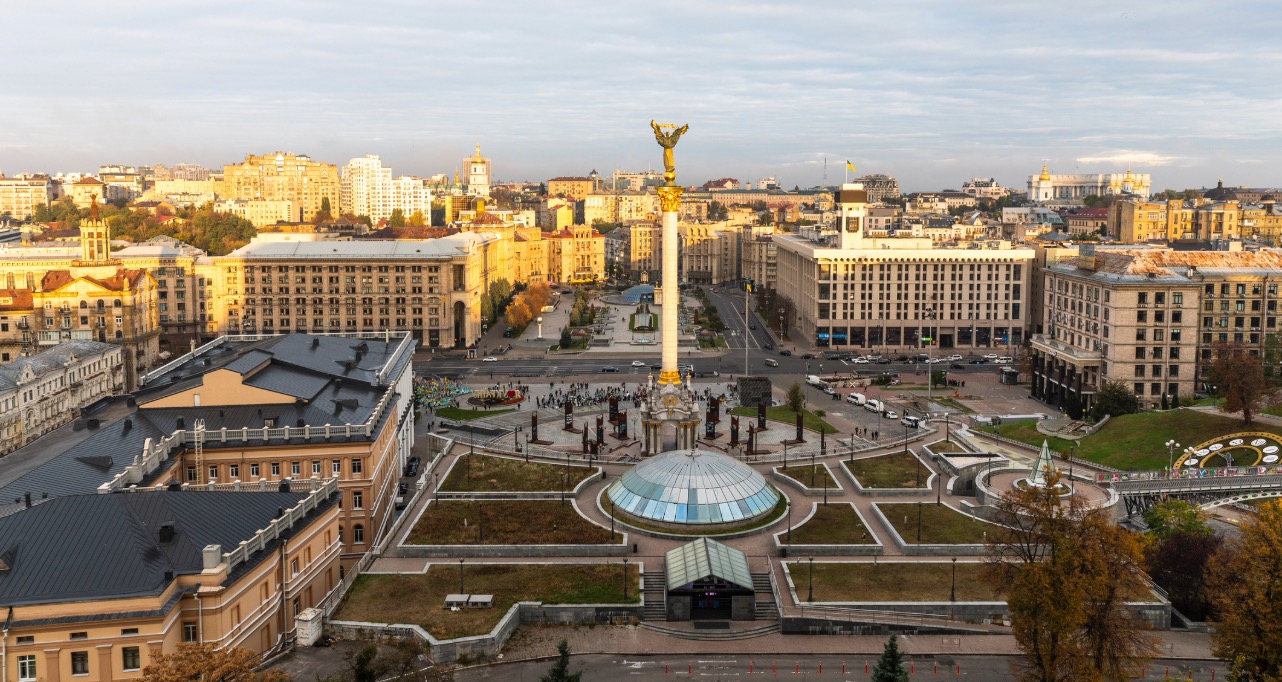- EBRD revises Ukraine 2025 growth forecast down to 3.3 per cent from 3.5 per cent
- Global trade pressures as well as war weighing on 2025 economic expectations
- EBRD forecast for 2026 unchanged at 5.0 per cent if fighting is suspended
Ukraine’s GDP growth is expected to slow to 3.3 per cent in 2025, with recent global trade frictions adding additional downside risks to already high uncertainty related to Russia’s war on the country, says the latest edition of a flagship economic report by the European Bank for Reconstruction and Development (EBRD). The previous report, in February, had forecast 3.5 per cent growth in 2025.
However, the EBRD’s Regional Economic Prospects (REP), published today, keeps its real GDP growth forecast for Ukraine in 2026 unchanged at 5 per cent, assuming a ceasefire and benefits from post-war reconstruction.
Across the EBRD regions – central and eastern Europe, Central Asia and the Southern and Eastern Mediterranean (SEMED) - average growth slowed from 3.4 per cent in 2022 to 2.7 per cent in 2023 and remained broadly stable at 2.8 per cent in 2024. But a sharp rise in trade and economic policy uncertainty in 2025, caused by increased global policy uncertainty, weaker external demand and the direct and indirect impact of announced increases in import tariffs, has prompted the EBRD to lower its regional May forecast for this year by 0.2 percentage points to an average of 3 per cent, before picking up next year to 3.4 per cent in 2026, unchanged from February.
Ukraine’s external financing to support its budget is secured for 2025, the report said. But it has seen a slowdown in economic growth, and accelerating inflation, since the middle of 2024 due to the impact of the war that began with the Russian invasion of February 2022.
Real GDP growth in 2024 slowed markedly from over 5.0 per cent in the first half of the year to around 2.0 per cent in the second half, bringing the overall figure down to 2.9 per cent. Causes included electricity shortages resulting from Russian attacks, weak harvests and acute labour shortages in the economy caused by the demands of the war.
While agriculture, energy production, and trade declined, other sectors exhibited solid growth despite challenging conditions and the war. Businesses demonstrated resilience and adaptability, which, coupled with the take-off during 2024 of Ukraine’s Black Sea trade corridor, led to the resumption of export growth after two years of sharp declines.
External financing remained at similar levels to those of 2023, covering the current account deficit and enabling Ukraine to maintain adequate official foreign reserves. Resurgent inflation in late 2024 was a consequence of rising electricity costs and high real wage increases. Ukraine unpegged its currency in October 2023, since when the hryvnya’s value has fallen about 10 per cent against the U.S. dollar.
Inflation stood at 14.6 per cent in March 2025 and is expected to stay elevated in the first half of 2025 but should fall to single digits by year-end. In response, the National Bank of Ukraine has raised its policy rate by a cumulative 250 basis points since December 2024, reaching 15.5 per cent in early March 2025.
Stable external financing from the EU under the Ukraine Facility and revenue from Russian frozen assets provided by G7 countries will fully cover external and fiscal deficits in 2025, underpinning macroeconomic stability. The strong stimulus from public consumption and increasing military purchases from domestic industry are expected to support economic growth.
The EBRD, Ukraine’s largest institutional investor, has significantly increased its support in response to the war. The Bank has made more than €7 billion available to Ukraine in the past three years, including €2.4 billion to the energy sector, supporting the real economy by its work on energy security, vital infrastructure, food security, trade and the private sector.




